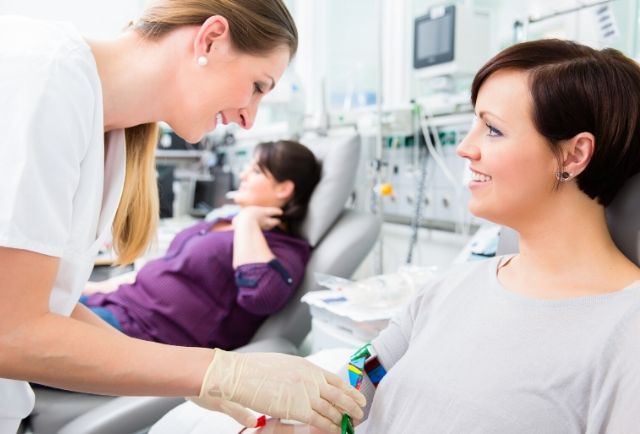5 Simple Techniques For Northeast Medical Institute - New Haven Campus Phlebotomy Course & Cna Class
5 Simple Techniques For Northeast Medical Institute - New Haven Campus Phlebotomy Course & Cna Class
Blog Article
How Northeast Medical Institute - New Haven Campus Phlebotomy Course & Cna Class can Save You Time, Stress, and Money.
Table of ContentsEverything about Northeast Medical Institute - New Haven Campus Phlebotomy Course & Cna ClassHow Northeast Medical Institute - New Haven Campus Phlebotomy Course & Cna Class can Save You Time, Stress, and Money.Northeast Medical Institute - New Haven Campus Phlebotomy Course & Cna Class Fundamentals ExplainedThe smart Trick of Northeast Medical Institute - New Haven Campus Phlebotomy Course & Cna Class That Nobody is Talking AboutA Biased View of Northeast Medical Institute - New Haven Campus Phlebotomy Course & Cna ClassUnknown Facts About Northeast Medical Institute - New Haven Campus Phlebotomy Course & Cna Class
The use of such devices ought to be accompanied by other infection prevention and control methods, and training in their use.For settings with low resources, price is a driving factor in procurement of safety-engineered gadgets - PCT Training. Where safety-engineered tools are not available, knowledgeable use a needle and syringe serves. Unintentional exposure and particular information about an incident ought to be videotaped in a register. Assistance solutions should be promoted for those that undergo unexpected direct exposure.
Among the vital markers of high quality of treatment in phlebotomy is the involvement and collaboration of the client; this is mutually helpful to both the wellness employee and the person. Clear information either written or spoken must be offered per person who undergoes phlebotomy. Annex F gives sample text for discussing the blood-sampling procedure to a person. In the blood-sampling space for an outpatient division or center, supply a comfy reclining sofa with an arm remainder.
The Ultimate Guide To Northeast Medical Institute - New Haven Campus Phlebotomy Course & Cna Class
Ensure that the signs for blood sampling are clearly defined, either in a written procedure or in recorded guidelines (e.g. in a research laboratory type). Gather all the devices needed for the treatment and area it within safe and easy reach on a tray or cart, making sure that all the things are plainly noticeable.
Introduce on your own to the person, and ask the patient to state their full name. Check that the lab kind matches the person's identification (i.e. match the client's details with the research laboratory kind, to ensure exact recognition).
Make the individual comfortable in a supine setting (when possible). Location a tidy paper or towel under the individual's arm. Discuss the test to be done (see Annex F) and acquire spoken authorization. The individual has a right to decline an examination any time before the blood sampling, so it is crucial to make certain that the patient has actually understood the procedure.
Some Of Northeast Medical Institute - New Haven Campus Phlebotomy Course & Cna Class
Expand the client's arm and inspect the antecubital fossa or forearm. Situate a blood vessel of a good dimension that shows up, straight and clear. The representation in Area 2.3, shows common settings of the vessels, yet many variations are possible. The median cubital blood vessel lies between muscles and is generally one of the most very easy to puncture.
DO NOT insert the needle where capillaries are diverting, since this raises the opportunity of a haematoma. The blood vessel needs to show up without using the tourniquet. Finding the blood vessel will assist in establishing the correct size of needle. Apply the tourniquet about 45 finger widths over the venepuncture website and re-examine the blood vessel.
Haemolysis, contamination and visibility of intravenous fluid and medicine can all alter the results (39. Nursing staff and physicians might access main venous lines for samplings adhering to methods. Specimens from central lines lug a risk of contamination or wrong research laboratory test results. It serves, but not suitable, to draw blood samplings when first presenting an in-dwelling venous tool, before linking the cannula to the intravenous fluids.
Northeast Medical Institute - New Haven Campus Phlebotomy Course & Cna Class Fundamentals Explained
Allow the location to dry. Failing to enable adequate contact time raises the threat of contamination. DO NOT touch the cleansed website; in certain, DO NOT put a finger over the capillary to guide the shaft of the revealed needle. It the website is touched, repeat the disinfection. Execute venepuncture as follows.
Ask the person to create a fist so the capillaries are much more popular. Get in the blood vessel swiftly at a 30 level angle or much less, and continue to present the needle along the blood vessel at the simplest angle of access - PCT Classes. When sufficient blood has actually been collected, release the tourniquet BEFORE withdrawing the needle
Getting My Northeast Medical Institute - New Haven Campus Phlebotomy Course & Cna Class To Work
Take out the needle delicately and apply mild pressure to the site with a tidy gauze or dry cotton-wool ball. Ask the patient to hold the gauze or cotton wool in location, with the arm expanded and raised. Ask the person NOT to flex the arm, since doing so creates a haematoma.

More About Northeast Medical Institute - New Haven Campus Phlebotomy Course & Cna Class
Do not press the syringe bettor since added pressure enhances the danger of haemolysis. Where feasible, maintain televisions in a shelf and relocate the rack in the direction of you. Infuse downwards right into the suitable coloured stopper. DO NOT eliminate the stopper due to the fact that it will certainly release the vacuum cleaner. If the example tube does not have a rubber stopper, inject incredibly slowly right into television as reducing the pressure and speed used to transfer the sampling reduces the danger of haemolysis.

Report this page